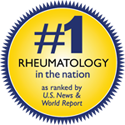The prevalence of both obesity and musculoskeletal pain continue to increase dramatically in the United States and the developed world. In the United States, approximately 1/3 of the adult population are classified as obese (i.e., body mass index: BMI > 30), while musculoskeletal pain is the leading cause of work-related disability among the US workforce and the leading cause of disability in adults aged 65 years or older. To estimate the link between body weight and musculoskeletal knee, hip, and back pain in older adults, Andersen and colleagues (Obesity Research, 11:1159-1162, 2003) analyzed data from a nationally-representative sample of adults aged 60 years or older.
Methods:
Population-based survey data from the Third National Health and Nutrition Examination Survey (NHANES III) involving 5,724 adults aged 60 years or older were used. BMI, calculated from measured weight and height, was used to categorize participants into six BMI-defined groups: underweight (< 18.5), desirable weight (18.5-24.9), overweight (25-29.9), obese class I (30-34.9), obese class II (35-39.9), and obese class III (> 40). The presence of significant knee, hip, and back pain was reported by respondents.
Results:
Overall, 21% of adults aged 60 or older reported significant knee pain, 14% reported significant hip pain, and 22% reported significant back pain. The prevalence estimates for knee (underweight 12.1% to obesity class III 55.7%), hip (underweight 10.4% to obesity class III 23.3%), and back pain (underweight 20.2% to obesity class III 26.1%) increased with increased BMI. Sex-, race-, and age-specific pain prevalence estimates also generally increased at increased levels of BMI.
Conclusions:
Among US adults aged 60 years or older, the prevalence of significant knee, hip, and back pain increases with increased levels of BMI.
Editorial Comments:
The BMI-pain associations observed in this study are consistent with what has been found among obese persons seeking weight reduction. That is, heavier persons are more likely to report musculoskeletal pain. In this study, for example, the prevalence of significant knee pain increased by 44% over the range of BMI. However, because NHANES III only surveys people at one time it is unknown whether elevated body weight preceded the development of pain. It is also unclear whether the observed association between BMI and pain is mediated by other factors such as diabetic neuropathy or degenerative arthritis. Finally, although the association between BMI and pain appears robust, it is less certain whether weight loss among obese older adults with pain will reduce the pain. Nonetheless, given the established link between obesity and chronic diseases, and the improvement in health outcomes associated with intentional weight loss, the admonition to maintain a healthy weight remains sound.

